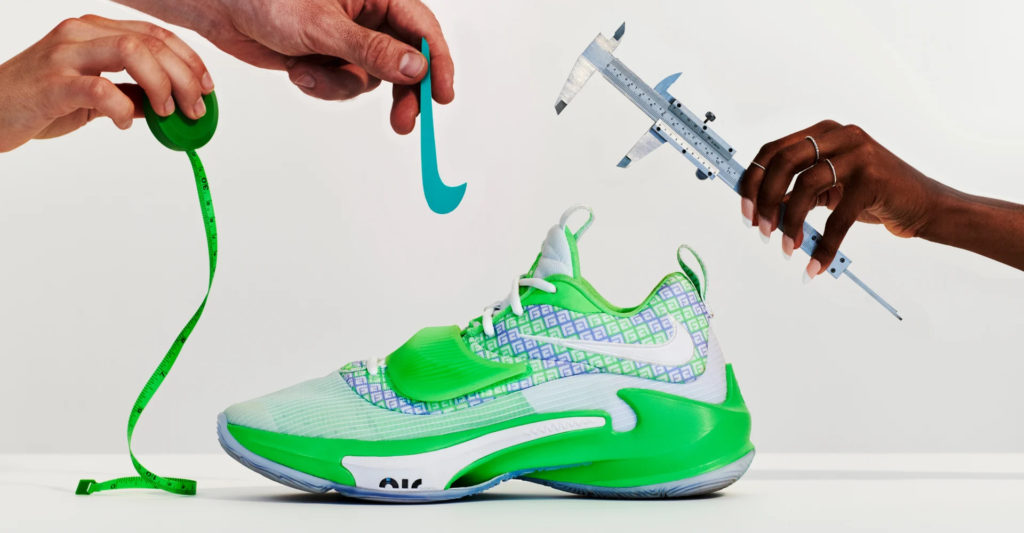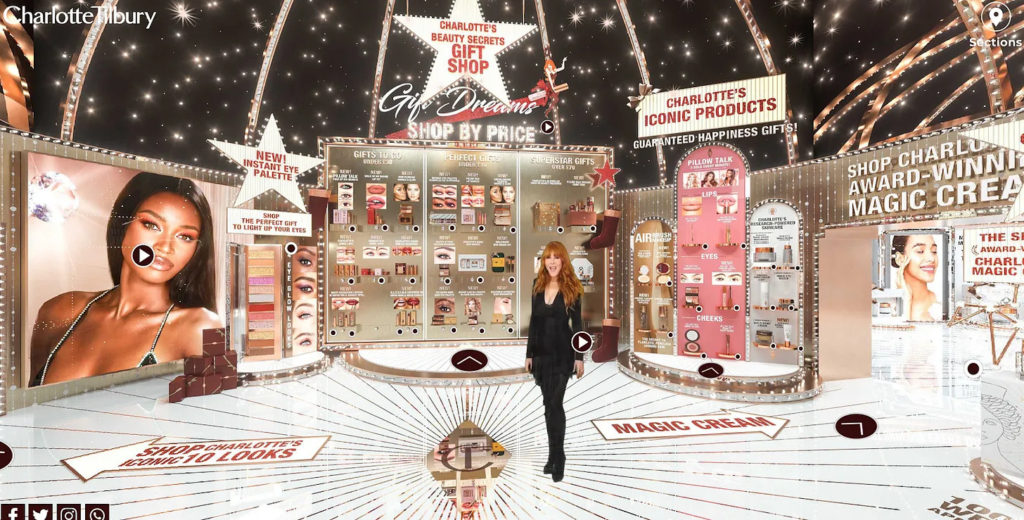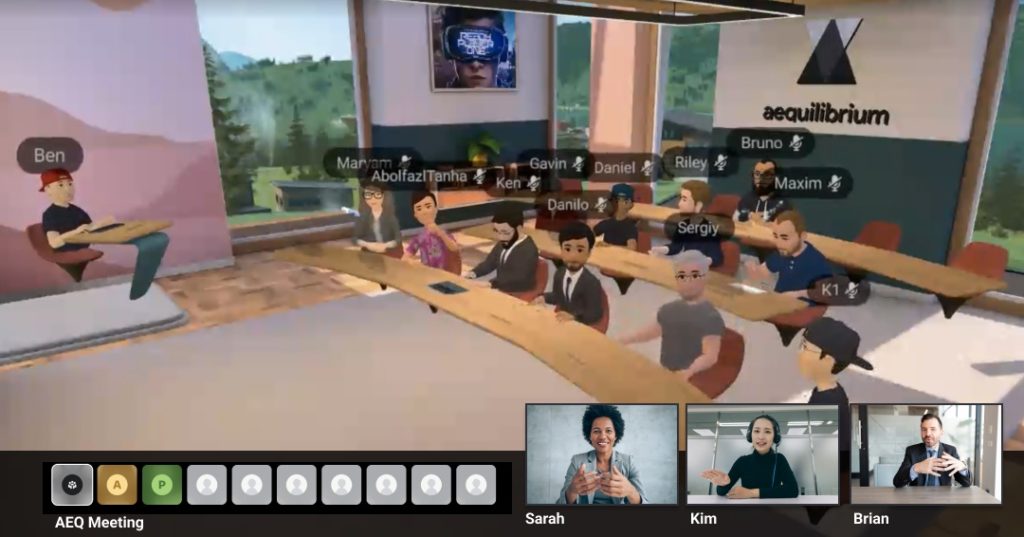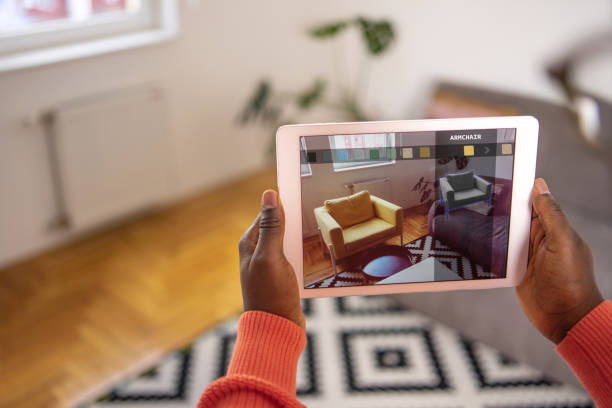Change happens too soon for those complacent with the status quo, and too slowly for those excited about the opportunities ahead. We are blessed to live in amazing times, with so much progress and innovation taking place each day.
Even with the COVID-19 pandemic, we saw innovation continue, as noted by the World Intellectual Property Organization, “we see remarkable resilience in the face of the greatest economic downturn in decades, with great promise at the frontiers of technological development.” And the rate of change is projected to increase at a growing rate with digital adoption taking quantum leaps.
In our previous article, we provided an introduction to the metaverse and started discussing how it will represent an evolution of the commerce experience. In particular, we focused on the purposeful buyer. In this second blog from the series, we will include some more curated customer experiences, additional insights, trends, and predictions.
The metaverse revolution has started, and progressive companies are already acting, experimenting, and taking the lead on this $13 trillion opportunity. Like the electric car revolution, which will allow for a short-term transition from gasoline engines, the metaverse is the next stage in the evolution of the internet. It will affect all industries and all companies, irrespective of geography or size. For business leaders looking to foster resilience, differentiation, and growth for their organization, this series will provide tips and dos and don’ts for how to craft remarkable experiences in the digital economy.
Products that are truly yours
Hyper-personalization enables people to customize the products they purchase to match their lifestyle, not just from the functionality perspective (specs), but also from the perspective of their personal brand. Dell (and other sellers of computers online) allows one to custom build their gaming computers (CPU, memory, video card, hard drive, etc.), place the order to the factory, and have it shipped to your home in days.
Gamers don’t want just a powerful, functional laptop that can run their games efficiently, but they want hardware solutions that empower them to “reimagine gaming by removing distractions and unlocking possibilities”.
Nike By You (formerly NIKEiD) allows shoppers to create original designs which define their style, as a way to personalize their looks. Despite this level of personalization, Nike still allows for 30-day free returns!

This level of personalization is possible not just for buying computers or shoes online. Nowadays, one can customize a car online: from the engine choice to the exterior paint, the color of the leather seats, wheels and tires, accessories, etc.
In order to enable this level of personalization online, a retailer must switch from presenting 2D photos of their products, taken with a specific configuration and colors, to a 3D product configurator, which models all the options that can be configured.
Then enable people to view the changes using a 3D interactive tour, from any angle and position. The virtual experience can be taken to the next level, by building an immersive showroom car experience, that would turn prospects into customers and brand ambassadors.
Tesla’s direct-to-consumer model is changing how dealerships operate and has tried to eliminate dealerships and radically change the way we buy cars by simply selling high-end, and expensive, cars online.
Other EV car manufacturers like Carvana and Rivian are also looking for direct-to-consumer solutions. While consumers do some level of research online before buying a car, most cars are still sold in person at a dealership, despite the fact that most consumers loathe the car buying experience because of the paperwork, haggling, and not knowing if they are getting a good deal on the car.
While car manufacturers have started just recently to enable such a level of customization online, in games, one has been able for many years to not only customize the look of a dream car, but also to change the tuning of the car, and experience the difference in how the car handles different environments (desert, off-road, rain, snow) and circuits.
In the metaverse, one will be able to not only build a custom-made car, but also test drive this dream car on different roads and in different conditions with their avatar and even accompanied by friends, while all of them sit in the safety and comfort of their homes.
Immersion and the physical-digital gap
Innovative companies are already bridging the gap between physical and digital through immersive experiences. For example, bioLogic is transforming fabric into wearable computers, using living actuators and synthesizing responsive bio-skin: they use bacteria whose cells expand and contract depending on atmospheric moisture, a process which can be leveraged to ventilate garments. Jacquard™ by Google weaves new digital experiences into the things you love, wear, and use every day to give you the power to do more and be more. Adidas uses Jacquard™ Tag and a specially designed insole to slip into any footwear to detect your on-pitch moves, then sync and display them as stats on your smartphone.
Social shopping brings people with common interests and tastes together to discuss, share and buy. Within social VR stores, people can communicate, engage, and share ratings, opinions, and advice about products, prices, and features. And all while looking at the product itself as if a group of like-minded people was together on a ‘field trip’ at their favorite store.

According to Deloitte, 47% of millennials use social media to guide their purchase decisions. Social shopping is still in its early days and is already incredibly profitable while the future holds incredible promise. For example, the metaverse will provide the perfect environment for social shopping, by enabling retailers to showcase interactive 3D products, while enabling social shopping communities to interact through their avatars and to generate a sense of ‘social reward’.
XR for a holistic experience
It’s not just products to keep in mind with regard to digital shopping. After all, commerce also includes services, and often products and services go together. Before you buy a product one may need to know who could provide installation services, or, certainly in the case of a car, who could provide ongoing maintenance. The customer always needs to be aware of what to do when support is needed, and innovative companies are already looking at XR solutions to the overlap between their products and the necessary services that go with them.
Democratization of Expertise
To address a customer’s need, one needs to understand the problem to solve, and then come up with a solution. This may require certain domain expertise.
To illustrate this point, let’s focus on the area of home improvement. I don’t consider myself a handyman, but given my background as an engineer, I would like to think I can do a decent job to follow instructions, say to replace a defective water pump in a washing machine or install a garburator.
While most of the time the installation instructions and the pictures from the manual coming with the product are pretty poor, you are likely to find a Youtube video that is much more helpful in teaching you “how to” get the job done.
Unfortunately, switching back between the job site and the video playing on your iPad can be pretty cumbersome and disruptive. A much better solution is to provide an augmented experience, in which one can view both the work area and a digital overlay with schematic and step-by-step instructions.
Acknowledging that home improvement requires expert knowledge, Lowe’s has pioneered a “how-to” series to distribute expertise to both customers and associates. They bring together computer vision, AI, mixed reality, and advanced hardware to reinvent training and facilitate remarkable experiences in remote collaboration.
Their Pros JobSIGTH was rolled out in 2020 as a tool to keep pros working during COVID when people were hesitant to bring someone into their home: this tool enables information capture (product details, job to be done), collaboration tools, and record generation.

One can use a LiDAR-compatible smartphone and the corresponding mobile app to scan the room and get a floor plan with accurate measurements. Say you want to revamp your kitchen: instead of hiring an expensive kitchen design company, you can opt for a low-budget, do-it-yourself solution using the interactive IKEA app to plan and design the kitchen and choose the right-size furniture to match your actual room layout.
Similarly, if you are looking to paint a room, you can use an AR application to scan the room, identify walls, floor, ceiling, and furniture, then choose the colors and see how your room will look under different lighting conditions, with different options of colors for the walls, floor, ceiling, kitchen cabinets, drapes — anything in the room.

Key takeaways
Our first two blogs in the series have focused on how progressive companies experiment today with crafting remarkable experiences for the future of commerce. They do so by removing friction, creating more social interactions and connectivity, distributing expertise in new ways, and empowering customers to express themselves and take complete control over their possessions, experiences, and lives.
Our 3 main takeaways from this article are:
- The metaverse is the perfect medium to drive the personalization and customization of commerce because of its immersive abilities.
- Immersion is key to bridging the gap between digital and physical.
- XR is invaluable to helping brands deliver a holistic experience that empowers the customer to make the right decisions for them and build brand trust and loyalty.
What do you think?
Whether you’re an expert on XR, or just curious about the future of digital, we’d love to hear from you. What do you think of the metaverse potential for a customized commerce experience? Or XR’s potential to deliver customer empowerment and deepen brand loyalty? Or anything at all! Let us know on Twitter or LinkedIn.





